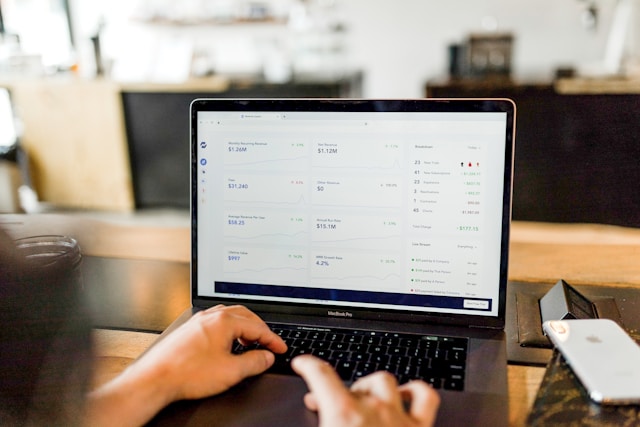How to Use Unit Economics to Scale a SaaS Business

Unit economics is at the heart of every successful SaaS business. However, many founders ignore it until cash flow issues demand their attention.
At its simplest, unit economics answers this question: Does acquiring and serving each customer bring in more revenue than it costs you?
It sounds easy enough, but the complexity of the SaaS model makes this calculation more intricate than it is for traditional businesses.
B2B SaaS subscription-based business models offer different plans for their subscribers, and no one is capable of managing them through a manual process. The automatic subscription management, billing, and revenue recognition software automates all such processes.
The Younium and similar subscription billing platforms are the best options for B2B SaaS business owners to automate their financial processes. These tools are designed according to the financial record-keeping requirements.
In this post, we’ll discuss the key principles of unit economics and demonstrate how SaaS founders can apply them to achieve sustainable, long-term success.
What is Unit Economics?
Unit economics refers to the direct revenues and costs associated with a single “unit” of business. For SaaS companies, a “unit” is typically a customer or subscription.
Unit economics helps you answer the big question: How much does it cost to acquire and service a customer, and how much revenue does that customer generate over time?
Key Metrics in SaaS Unit Economics
To leverage unit economics in your SaaS business, it’s crucial to understand the key metrics you need to track. Here are some of the most important ones.
1. Customer Acquisition Cost (CAC)
Customer Acquisition Cost (CAC) refers to the expenses incurred to acquire a new customer. The formula for CAC is:
CAC = Total Sales and Marketing Expenses / Number of Customers Acquired
2. Customer Lifetime Value (CLTV or LTV)
CLTV represents the total revenue you get from a customer during their relationship with your business. This includes average subscription price, churn rate, and customer lifespan.
CLTV = Average Revenue per User (ARPU) × (1 / Churn Rate)
3. Payback Period
This measures how long it takes to recoup customer acquisition costs. Shorter payback periods enable faster reinvestment in growth. The formula for Payback Period is:
Payback Period = CAC / Monthly Recurring Revenue per Customer
4. Gross Margin
Gross margin is the percentage of revenue remaining after deducting direct service delivery costs, such as server hosting and customer support. The formula is:
Gross Margin = ((Revenue – Cost of Goods Sold (COGS)) / Revenue) × 100
5. Churn Rate
The churn rate measures the percentage of customers who cancel their subscriptions over a given period. High churn often indicates that insufficient value is being delivered or that customers are dissatisfied. The formula for churn rate is:
Churn Rate = Number of Customers Lost / Total Number of Customers at Start of Period
Using Unit Economics to Optimize SaaS Growth
Now that we’ve covered the key metrics of unit economics, let’s explore how you can use them to drive sustainable growth for your SaaS business.
1. Improve Customer Acquisition Efficiency
To ensure that every dollar spent on acquiring customers yields a positive return, you must continually refine your acquisition strategies. Here’s how:
- Segment Your Customer Base: Identify your most profitable customer segments and focus on acquiring more customers from those groups.
- Explore Low-Cost Acquisition Channels: Instead of relying solely on paid ads, consider using SEO, content marketing, or other more affordable channels.
2. Maximize Customer Lifetime Value (CLTV)
Use these tactics to boost your CLTV:
- Build Customer Loyalty: Provide excellent support, keep your customers engaged, and run a loyalty program to foster loyalty and enhance retention.
- Upsell and cross-sell: Offer existing customers new features or premium plans that enhance their experience.
- Reduce churn: Monitor customer feedback closely and address issues promptly to minimize churn and maintain customer satisfaction.
3. Focus on Operational Efficiency
A high gross margin provides more room to reinvest in areas such as customer acquisition and product development. So, it’s essential to continuously optimize your operations to reduce costs while maintaining the quality of service you provide.
You can automate routine tasks and outsource non-core functions to increase efficiency.
4. Monitor the Payback Period
The quicker you can recover your Customer Acquisition Cost (CAC), the faster you can reinvest in growing your business.
So, take steps to increase the revenue you get from each customer through strategic pricing and upselling.
Conclusion
There you have it — the basics of unit economics for your SaaS business.
Use unit economics to make well-informed, data-driven decisions. By paying attention to key metrics such as customer acquisition cost (CAC), customer lifetime value (CLTV), payback period, and churn rate, you can ensure that each customer is profitable for your business.
You can then utilize these insights to enhance your business operations, lower costs, and boost overall profitability.
However, remember that it’s not a one-and-done thing. You need to continually tweak and refine your strategy to keep your unit economics in top shape, ensuring they consistently drive profit and efficiency.
